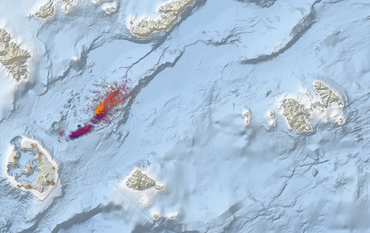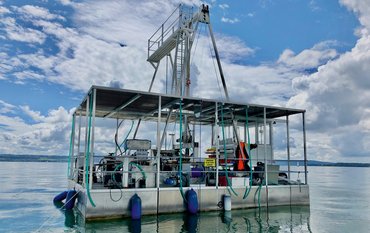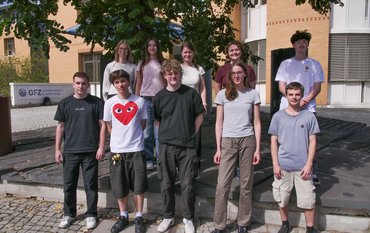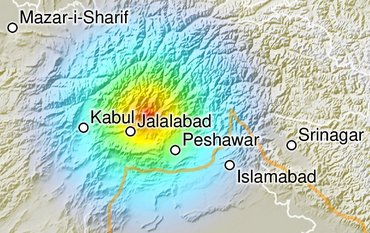Heidi Kreibich, head of the "Flood Risk and Climate Adaptation" working group at the GFZ German Research Centre for Geosciences, delivered the esteemed Leonardo Lecture at the conference focused on "From Science to Society: Expecting the Unexpected in Flood and Drought Risk Management" on June 19, 2025. The event took place in the historic Aula “Prodi” at the University of Bologna, Italy.
This conference is part of the Leonardo conference series of the European Geosciences Union on the Earth’s hydrological cycle. This conference series addresses current topics related to water and its interactions with the environment and society, with a particular focus on water management, flood protection, and environmental protection. Each conference features a keynote Leonardo Lecture, delivered by a distinguished scientist in the field. This year, that honor was bestowed upon PD Dr. Heidi Kreibich.
In her lecture, titled “Flood Risk Assessment and Management in Dynamic Human-Water Systems,” PD Dr. Heidi Kreibich highlighted the importance of risk management strategies based on risk assessments that explicitly consider the dynamics and complex feedback loops within systems where humans impact and interact with the water cycle. Heidi Kreibich presented recent advances in this area, focusing on three key aspects:
1. A primary focus was spatially consistent, probabilistic flood risk modeling for decision support under high uncertainty, specifically the “Regional Flood Model | RFM”. The RFM modeling system is composed of advanced tools such as weather generator, hydrological model, hydraulic model and probabilistic damage models. It covers all of Germany and provides long time series of spatially consistent patterns of rainfall, flood peaks, inundation and damage of three sectors: a) private households, b) commerce/industry, and c) agriculture, enabling sustainable flood risk management (Sairam et al. 2021). One of its innovative components are the multivariable, probabilistic damage models that describe damage processes better than traditional depth-damage functions and as such reduce uncertainty and inherently provide quantitative uncertainty information (Lüdtke et al. 2019)
2. A second focus of the lecture was impact based forecasting of flooding triggered by heavy rainfall. This flooding is a growing problem expected to worsen with climate change and affect many communities. To provide communities with the tools to better prepare for flooding, the RIM2D model was developed (Apel et al. 2024). It provides 2D flood simulations and comes with freely available geodata supporting automation. It runs efficiently on GPUs, enabling particularly fast simulation of larger areas, supporting timely and targeted emergency interventions, particularly when coupled with simulations of fatalities and damage (Silva et al. 2025, Rözer et al. 2021).
3. A third focus of Heidi Kreibich’s lecture was the so-called “Paired Event Analysis.” This assesses how societies adapt to their specific flood risk by comparing two successive flood events in the same region. This approach shows which changes have effectively reduced the risk. The analysis helps track changes in flood risk over time and identifies sustainable adaptation strategies for future flood events (Kreibich et al., 2022).
Taken together, these three key aspects highlighted in the lecture form an important foundation for reducing flood risk, strengthening emergency response, and deepening our understanding of how floods interact with our environment and society.
References:
Apel, H., Benisch, J., Helm, B., Vorogushyn, S., Merz, B. (2024): Fast urban inundation simulation with RIM2D for flood risk assessment and forecasting. - Frontiers in Water, 6, 1310182. doi.org/10.3389/frwa.2024.1310182
Kreibich, H., Loon, A. F. V., Schröter, K., et al. (2022): The challenge of unprecedented floods and droughts in risk management. - Nature, 608, 80-86. https://doi.org/10.1038/s41586-022-04917-5
Lüdtke, S., Schröter, K., Steinhausen, M., Weise, L., Figueiredo, R., Kreibich, H. (2019): A consistent approach for probabilistic residential flood loss modeling in Europe. - Water Resources Research, 55, 12, 10616-10635. doi.org/10.1029/2019WR026213
Rözer, V., Peche, A., Berkhahn, S., Feng, Y., Fuchs, L., Graf, T., Haberlandt, U., Kreibich, H., Sämann, R., Sester, M., Shehu, B., Wahl, J., Neuweiler, I. (2021): Impact‐based forecasting for pluvial floods. - Earth's Future, 9, 2, 2020EF001851. https://doi.org/10.1029/2020EF001851
Sairam, N., Brill, F., Sieg, T., Farrag, M., Kellermann, P., Nguyen, D., Lüdtke, S., Merz, B., Schröter, K., Vorogushyn, S., Kreibich, H. (2021): Process-based flood risk assessment for Germany. - Earth's Future, 9, 10, e2021EF002259. https://doi.org/10.1029/2021EF002259#
Silva, A. F. R., Eleutério, J. C., Apel, H., Kreibich, H. (2025): Assessing the impact of early warning and evacuation on human losses during the 2021 Ahr Valley flood in Germany using agent-based modelling. - Natural Hazards and Earth System Sciences (NHESS), 25, 4, 1501-1520. https://doi.org/10.5194/nhess-25-1501-2025



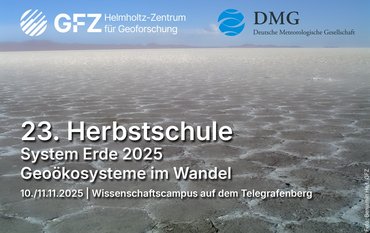
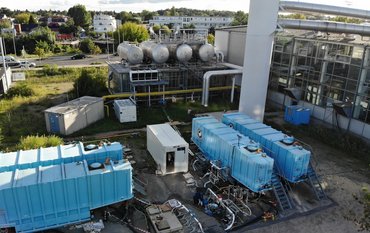
![[Translate to English:] Group photo with 8 people in a seminar room in front of a screen.](/fileadmin/_processed_/2/1/csm_20251114_News_EU-Water-Resilience-Exchange_Kreibich_c-xx_db4e5be690.jpeg)
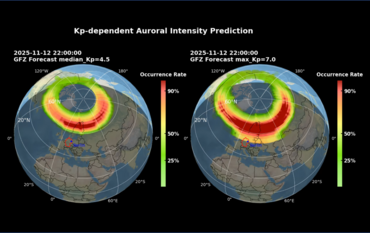


![[Translate to English:] Portrait photo, blurry background](/fileadmin/_processed_/a/2/csm_2025_11_06_JEAN_BRAUN_HE_Helmholtz_Portraits-23_2b5c35beee.jpeg)
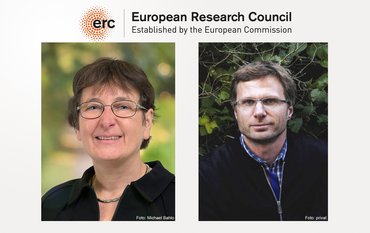
![[Translate to English:] Excerpt from a map of the Phlegraean Fields near Naples, Italy: Left: Red dots mark smartphone sensors, yellow triangles mark fixed seismological stations. Right: The area is coloured in shades of yellow, red and purple according to the amplification of seismic waves.](/fileadmin/_processed_/3/b/csm_20251028_PM_Smartphone-Earthquake_Slider_12500fa0e6.jpeg)

![[Translate to English:] Green background, portrait of Heidi Kreibich](/fileadmin/_processed_/1/1/csm_20251023_Kreibich-Heidi-2025-Vollformat-green_web_-c-Michael-Bahlo_72946c7fe4.jpeg)
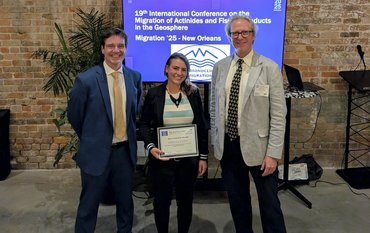
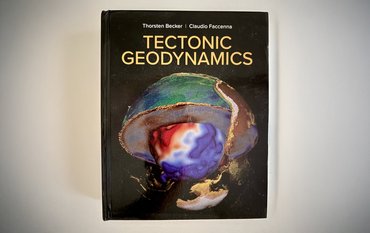
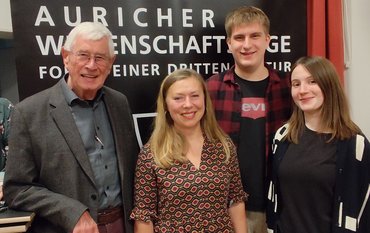
![[Translate to English:] semicircle depicting the future missions, graphics of the new satellites](/fileadmin/_processed_/3/d/csm_2025_10_08_Copernicus_Erweiterung_3f08a76a33.png)
![[Translate to English:] Portrait picture](/fileadmin/_processed_/f/4/csm_Magnall-Joseph-Kachel-c-privat_36e23315c3.jpeg)

